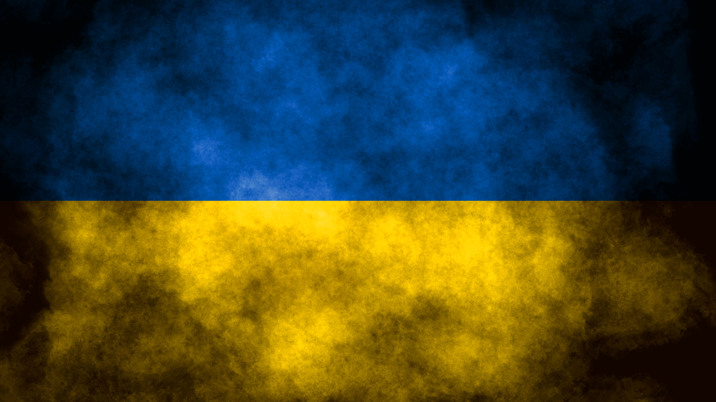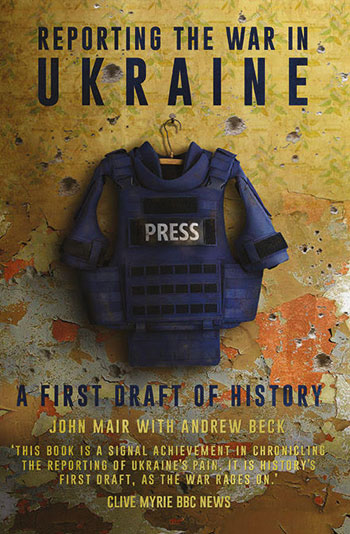
The Russian government has a rather peculiar / interesting relationship with reality. While Western governments often play fast and loose with facts, it is sometimes difficult to understand quite how absurd the Russian government’s relationship with the truth has become. For example, when the Russian Ministry of Defence (MoD) published easily disprovable faked satellite images in an attempt to blame Ukraine for the shooting down of Malaysian Airlines Flight MH 17, or when state-run Channel One broadcast footage from the computer game ‘Arma-3’ on the premise that it showed combat in Syria. Or when Mr Putin himself was caught showing footage of American troops in Afghanistan claiming it was Russians fighting ISIS. Or when the Russian MoD claimed it had “irrefutable evidence” of US troops aiding the Islamic State, which turned out to be footage from the computer game ‘AC-130 Gunship Simulator’. As you might see, there’s a bit of a theme here.
Disinformation as a way of life
These aren’t only simple mistakes on the part of the Russian institutions. Deliberate disinformation by the Russian state is used alongside its military power to achieve strategic objectives. During the first invasion of Ukraine in 2014, Mr Putin claimed, despite the absolutely overwhelming evidence to the contrary, that Russian troops were not involved. Although even at the time this statement was clearly absurd, it had the effect of sowing doubt and division within the world community about how best to respond to Russia’s invasion.
A more focused example is the disinformation campaign that targeted the Syrian Civil Defence (SCD), often referred to as the White Helmets. A Western-funded search and rescue organisation based in rebel-held Syria, they came to prominence for pulling people out of the rubble from Syrian regime and Russian airstrikes. Due to their policy of wearing helmet cameras, they also became one of the most prominent sources of information regarding the brutal campaign that Bashar al Assad was waging against his own people. The result was a massive (dis?) information campaign which painted the SCD as ‘terrorists’, including blaming them for the chemical attacks carried out by the Syrian regime. This campaign had a significant amount of success, undermining the information provided by the SCD, making it more difficult for them to gather funding and ultimately painted these rescue workers as ‘legitimate targets’ who could be targeted and killed like any other combatant.
Before the February invasion
So, when Russia built up its forces in Ukraine in early 2022, while at the same time claiming that they had no intention of invading, we were a bit sceptical.
At Bellingcat, we are intimately familiar with the approach that the Russian government takes to these kinds of events. We strongly suspected that an information campaign would precede the actual launch of hostilities. Sure enough, in the run up to the invasion, the Russian state attempted to generate a narrative that the ‘Neo-Nazi’ Ukrainians were staging a huge build-up in the Donbass with the intent of invading separatist-held areas. As part of this narrative, the ‘Neo-Nazi’ Ukrainians would, of course, create provocations in order to generate a pretext to invade.
What we saw over the first weeks of February 2022 was the Russian government’s attempt to support this narrative. Luckily for us, attempts to fake attacks and provocations by the Ukrainian government were amateurish and transparently false. It helped that a community of analysts, journalists and hobbyists, formed on the internet and forged through multiple conflicts, was already waiting in the wings, ready to pore over every scrap of information that the Russian government released.
Verification or not?
This was done using processes of verification that had developed over the previous decade to assess the validity of information emerging online from confusing situations, primarily conflict zones. Each image or video tells a story, and sometimes that story is different from the claim which accompanies it. For example, a person could post a video of a protest in the Middle East claiming it is in Iran, but on closer inspection, some people in the crowd are carrying Iraqi flags and the street signs are in Arabic, rather than Persian. This is probably quite a strong indicator that the video is actually in Iraq and the poster is, in fact, a bad liar.
By placing the video exactly in space, a process known as geolocation, it may be possible to establish precisely when the video was filmed and thereby even identify the precise event during which the video was filmed.
Sometimes, the tell-tale information isn’t the image or video itself, but rather its metadata: data embedded in the image or video by the device which recorded it. Metadata records a multitude of factors, including the time it was taken and sometimes even the GPS coordinates. Most social media platforms delete this metadata, but Telegram, which is incredibly popular in Russia and Ukraine, sometimes does not.
The computer says ‘no’
On 18 February, the leaders of the self-proclaimed Donetsk and Luhansk People’s Republics (DPR & LPR) announced an evacuation of their civilians into Russia, claiming the recent escalation in fighting due to apparent Ukrainian aggression was a threat to them. These statements were filmed and published on the official Telegram channels, leaving the metadata intact. Sharp eyed observers noticed that the metadata of these videos showed they had been filmed on the 16 February 2022, two days before the official pronouncements and while the “escalation” was still in its early days.
Also on the 18 February, a video was released by the DPR which claimed to show bodycam footage from a group of Polish speaking men who had apparently attacked a sewage facility in separatist-held Horlivka, attempting to blow up a canister of chlorine gas. Needless to say, this attack was heroically thwarted. The incident immediately came under suspicion due to the central role that Russian disinformation has played in relation to chemical weapons attacks in Syria, often blaming first responders and victims themselves for carrying out attacks which had been perpetrated by the Syrian regime.
Once again, the metadata associated with the video demonstrated that this apparent chemical attack was completely fabricated. It showed that the video had been filmed on the 8 February, well before the attack had reportedly taken place. Even more damning, it was discovered that the sound of explosions heard within the video had been edited in, and had been taken from a video depicting a Finnish military exercise!
‘Bodies and bones’?
The most egregious example of these fabricated incidents took place on 22 February, when an IED (Improvised Explosive Device), reportedly placed by the Ukrainian army, allegedly killed three civilians. Grisly footage taken by journalists and activists showed the aftermath, with three burnt bodies shown in gruesome detail in the back of a civilian vehicle.
Once again, eagle eyed members of the online community noticed discrepancies with this account, with the most suspicious feature being a series of straight cuts to the skull of one of the victims. These cuts looked less like damage caused by an IED, and much more like a surgical procedure carried out during an autopsy. We investigated this incident further, asking the opinions of an explosive weapons expert and forensic pathologists, all of whom concluded that the details seen regarding this incident were not consistent with an IED, but were consistent with the victims having undergone autopsy before their bodies were burnt in the car. Most gallingly, the Russian government has repeatedly accused the Syrian opposition of faking chemical weapons attacks using bodies taken from morgues, not only without evidence, but often in the face of extremely good evidence demonstrating the Syrian regime was responsible. Yet this is precisely what Russian-backed separatists, who are under the influence of the Russian government, appear to have done in this case in Ukraine.
Good information is out there
It is easy to draw the conclusion from these events that nothing on the internet can be trusted, yet this would not only be wrong, it also plays into the hands of those, like the Russian government, who actively want to make people doubt that objective truth can ever be found. Or, in the words of Peter Pomerantsev, that “nothing is true and everything is possible”.
The reality is that the vast majority of content seen online regarding conflict is legitimate information which can be captured, preserved and most importantly, verified. Once this process is complete it can be used either for journalistic endeavours or even as evidence for accountability purposes.
Ultimately, Bellingcat’s goal in the days before 24 February was to examine and, if necessary, debunk narratives pushed by the Russian government which were used to justify the invasion. Despite this justification falling flat, Russia invaded on the 24 February 2022 and started a new war which has, so far, cost the lives of tens of thousands of people. However, unlike in Syria, where Russia had some success in painting all parts of civil society as jihadists, its ‘Neo Nazi’ narrative justifying the war in Ukraine was relatively unsuccessful, at least in Europe and North America.
Post invasion
With the invasion, Bellingcat’s focus has switched to accountability, both for journalistic and legal purposes. We are recording examples of civilian harm in Ukraine as a result of the conflict, taking care not to differentiate that caused by Russia or Ukraine. While we recognise that international justice is a long road, we hope that by demonstrating clearly that we are watching, we may mitigate at least some of the horrors of war, and maybe eventually help to bring perpetrators to justice.

This chapter was taken from the new book, ‘Reporting the War in Ukraine: A first draft of history’, edited by John Mair and Andrew Beck and published by Abramis Academic.












